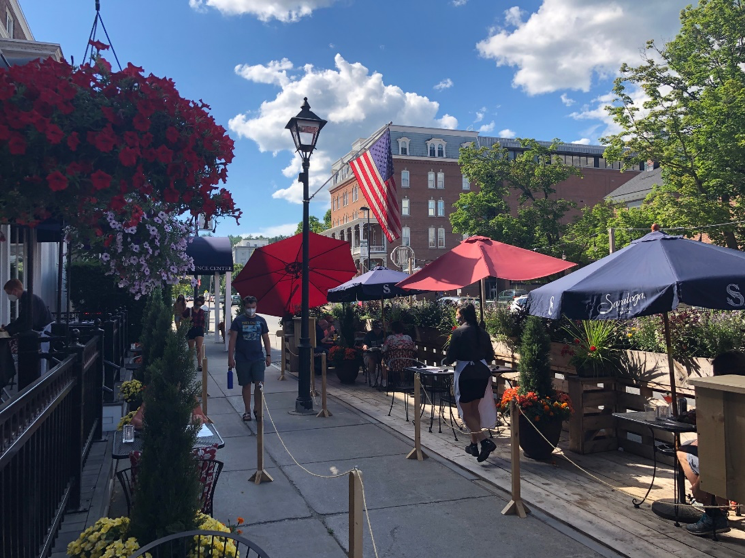By Richard Amore
Almost overnight the COVID-19 crisis turned our dining rooms into offices, parking spaces became places to eat, and our parks and public spaces served as safe places to reconnect during an isolating year. The realities of our homes, our communities, and our workplaces shifted rapidly, and the pandemic brought forth opportunities that we never thought possible before. As we emerge from the pandemic and transition to the new normal, we have an opportunity to reflect on the changes brought by COVID and take more enduring steps to improve quality of life, local economies, and social capital in Vermont communities.
Many communities are eager to restart and rebuild and are asking, “How do we build back better?” Many are feeling the impacts to downtowns from the transition to online shopping; the inequities in income, race, and place exposed by the pandemic; and the need to build social capital by strengthening the connections between people and places. Will state and local leaders make the most of this once-in-a-lifetime opportunity to make Vermont’s cities and towns more walkable, more economically resilient, more vibrant, and more welcoming? I sure hope so and want to share a few thoughts and reflections on how we can build back better for all Vermonters.
It Starts with the Sidewalks
“Sidewalks are like rivers where lives of people come together.”
– William H. Whyte; American Urbanist and Author
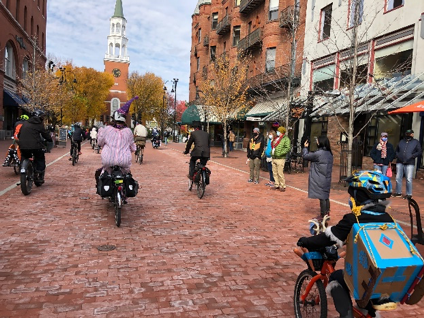
There are many great reasons to have walkable streets, but during the pandemic, they proved all the more valuable. Montpelier’s sidewalks provided me opportunities for social interaction, physical activity, and respite from a deluge of Zoom meetings. I took profound joy in walking my sons to school, connecting with friends and neighbors, even at a distance and briefly. This common space provided me a sense of community and social interaction desperately needed during isolating times.
We often think of transportation infrastructure in terms of mobility and access, but it is so much more. As the pandemic has illustrated, our sidewalks serve as essential social and economic infrastructure to help businesses expand their showrooms, restaurants expand their dining rooms, and for Vermonters to expand their living rooms to connect with one another in public life. Sidewalks are the first step in building walkable, equitable, and welcoming communities.
The Places We Gather Strengthen Connections to Place and to Each Other
“Convincing people to “live life in public” is one of the greatest services you and I can perform for our cities. Because parks are not just places to unwind or recreate, just like downtowns are not simply places to conduct business. They are deeply necessary platforms for equity.” – Carol Coletta; President and CEO at Memphis River Parks Partnership
Across Vermont and the globe, the pandemic highlighted the importance of a robust, connected, and inclusive public realm and civic common. This past year demonstrated that accessible public spaces and social infrastructure are critical to our health, economy, and social lives. Social infrastructure is comprised of the physical places and activities where community-building occurs, like libraries, schools, playgrounds, recreation centers, art centers, grange halls, farmers markets, public swimming pools, and parks as well as our village general stores and neighborhood corner stores. These “third places” are often found in walkable places and our critical in strengthening social cohesion, building relationships that can create opportunity, and helping us reconnect with one another and heal from the collective trauma of this past year.
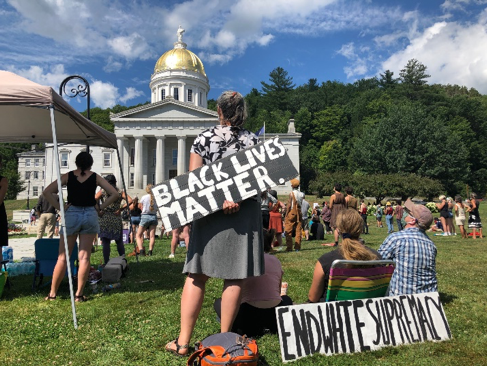
We need physical and social places in our communities where it is possible to make connections with other people. To discuss and exchange ideas face to face, participate in the civic life, engage in peaceful protest, and enjoy cultural events to celebrate and build collective memories. Why does this matter? Being around others, including those who don’t look or act like us, breeds empathy and understanding (Colletta), which is essential to building community, overcoming barriers, developing communal solutions, and equitably rebuilding our civic life, our economy, and democracy.
“Equitable growth for a community means that residents grow alongside it, and that the community continues to grow because of its residents. The growth comes from within the community, and the residents who have participated in its history and culture not only benefit from that growth but help to make it happen.” – Eureka Gilkey; Executive Director, Project Row Houses
We Can Build Better Places for Everyone
Vermont’s and our country’s success in fighting for equality, overcoming civic distrust, and preparing for future pandemics and climate change depends upon more trust, more empathy, more local empowerment, more civic participation, more communal problem solving, and more economic opportunity —not less (Marquis). To face these challenges and opportunities, we need investments that provide more opportunities for all members of the community to engage in social life and economic opportunity.
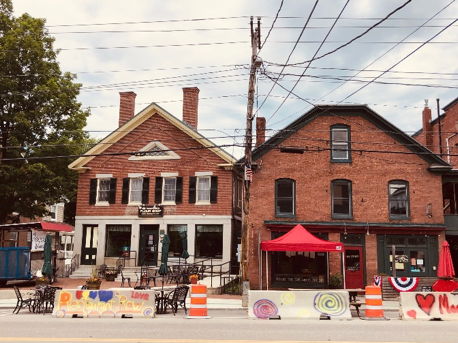
For all these reasons and more, I am excited about the new Better Places program piloted in December, and currently making its way through the legislature. The Better Places program is a new tool to inspire local action, supporting small but impactful improvements to downtown and village gathering spaces that build community, celebrate local culture, and create better places for all. What excites me most about the Better Places program is not only its focus on creating and activating public spaces in Vermont’s walkable downtowns and villages – but its commitment to community engagement through its crowdfunding approach and by broadening the conversation to includes residents in meaningful engagement and co-creation of their own community gathering areas.
We can’t achieve true economic revival without bridging social divides and creating more opportunities for residents to come together. These investments in places matter– because people matter, and place determines people’s health, wealth, and happiness more than anything else.
What We Invest in Post-Pandemic will Define the Future of Vermont
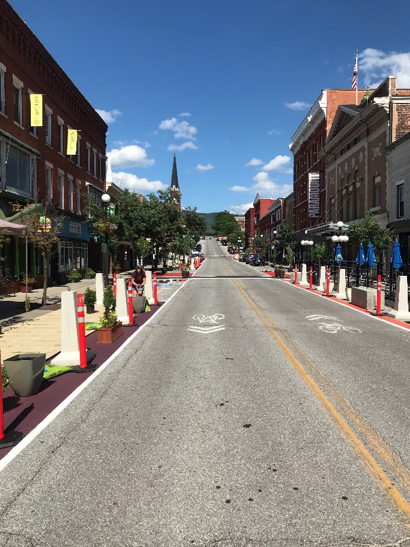
We need to treat our public spaces and community gathering areas as essential infrastructure, not luxuries. As more federal dollars come to Vermont, we need to capitalize on this opportunity to build welcoming places for Vermonters to gather and connect with one another – whether that means including public spaces and parks in affordable housing, building inclusive streets with widened sidewalks, adding colorful murals and performing arts to our public spaces, or addressing climate change by equipping more public spaces to absorb stormwater or serve as a place of respite on hot summer days.
If the hardships of the past year taught us anything, it is that we urgently need investments in people, public spaces, and social infrastructure that rebuild our trust and build hope for a better future for every Vermonter and our Brave Little State. Investing in Better Places is a start in the right direction to enable more Vermonters to co-invest and co-build welcoming, prosperous, and equitable communities. With this and other investments – and the creativity and spirit of the people in our communities – the opportunity lies ahead of us to make transformational change and leverage the power of public spaces to build better and more equitable places that makes us proud to be Vermonters.
Richard Amore is a landscape architect, urban planner, and community builder who blends his experience in community development, public space, and placemaking to spark revitalization of Vermont’s downtowns and village centers. He serves as planning and outreach manager for the Vermont Department of Housing and Community Development where he works with downtowns and villages across Vermont and helps them plan and build prosperous, walkable, and inclusive communities.
Top photo: Montpelier’s expanded parklet policy has allowed more outdoor dining options and parklets downtown. Photo by Richard Amore.




